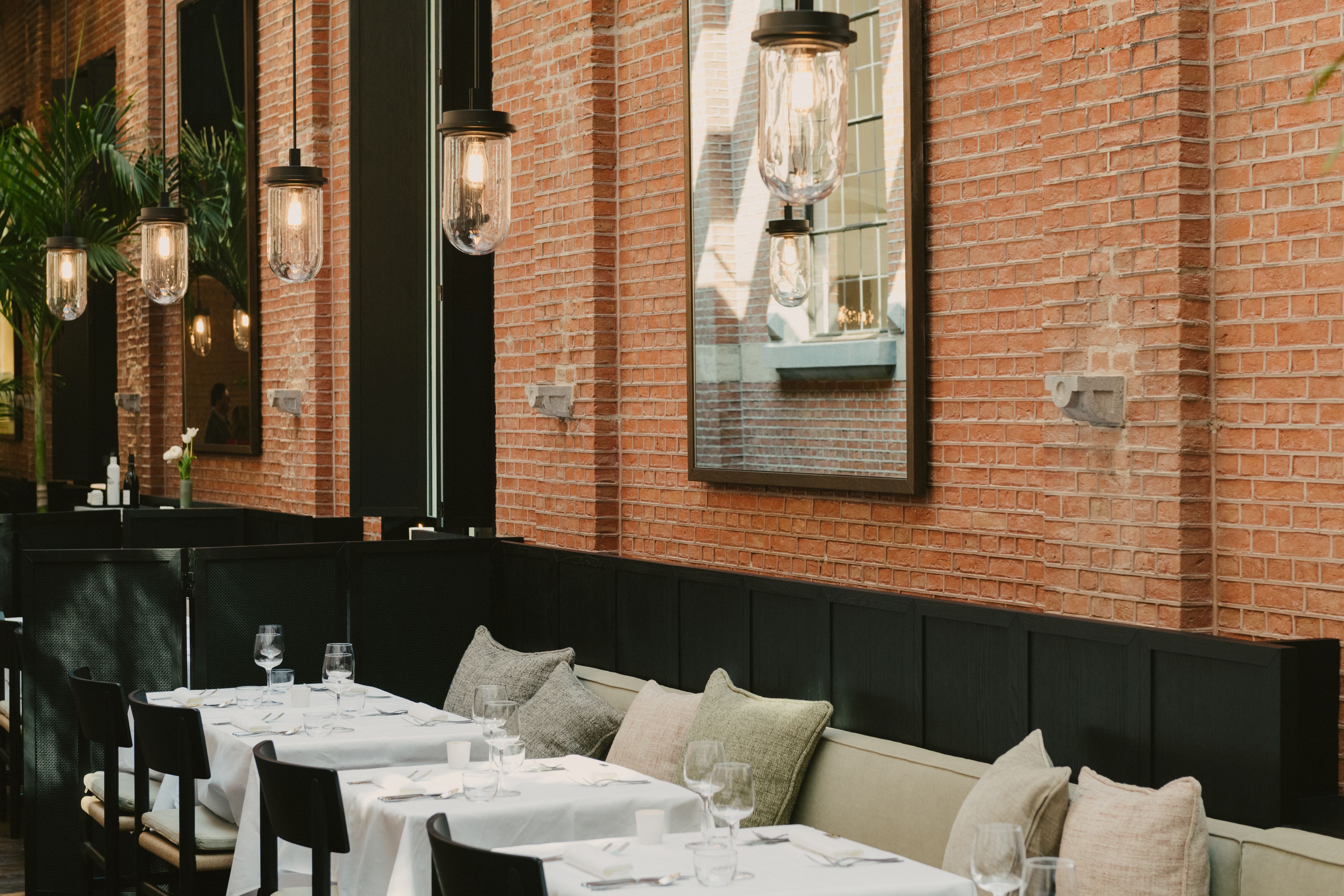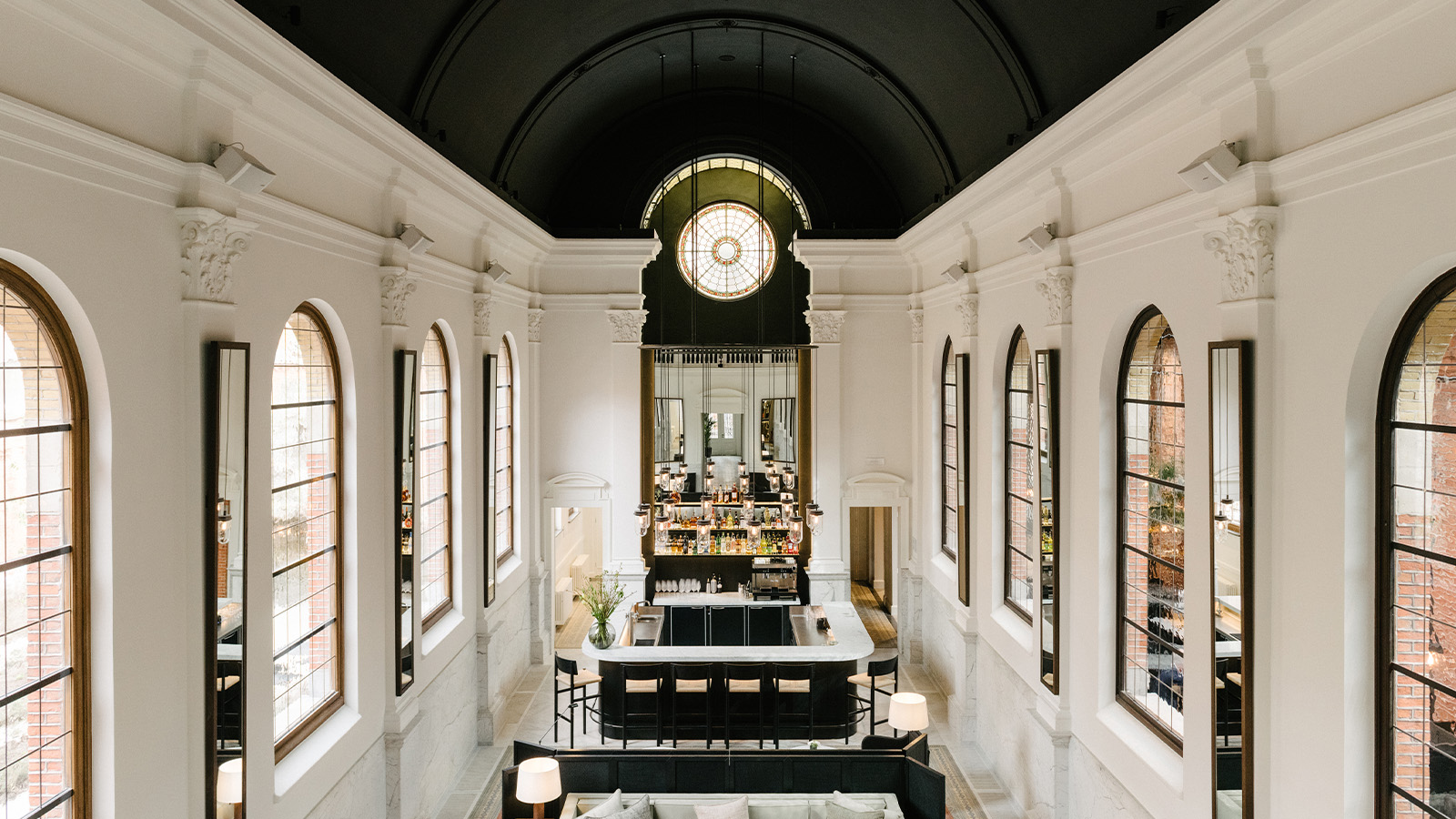
Antwerp’s Green District landmark, Hotel August, is now a proud member of The Aficionados, an established guide for design hotels, travel culture and lifestyle. First revealed in 2019, the transformation of this historical gem was carried out by Belgian architect and interior/product designer Vincent Van Duysen (currently showing at Design Miami 2023), along with hotelier Mouche Van Hool, renowned for her success with Antwerp’s Hotel Julien.
Hotel August is a modern-day sanctuary featuring a bar and restaurant, wellness facilities, a shop and gardens
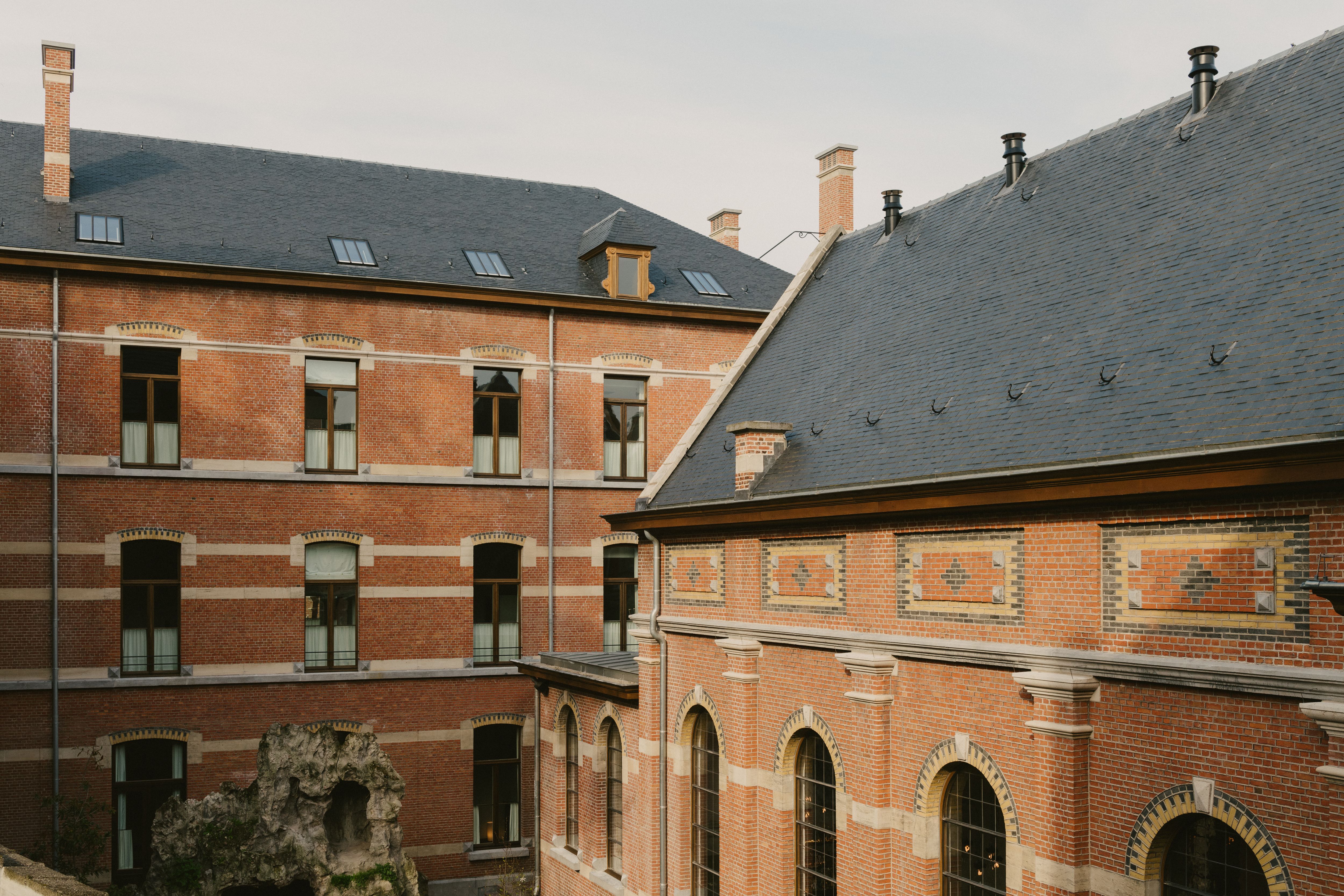
Named after the former Augustinian cloister and chapel, Hotel August occupies five interconnected red-brick grand buildings, encompassing a private chapel, former nuns’ living quarters, townhouses, and walled gardens. Van Duysen, in his inaugural hotel project, has restored the neoclassical features dictated by the building’s listed status, infusing it with a modern touch.
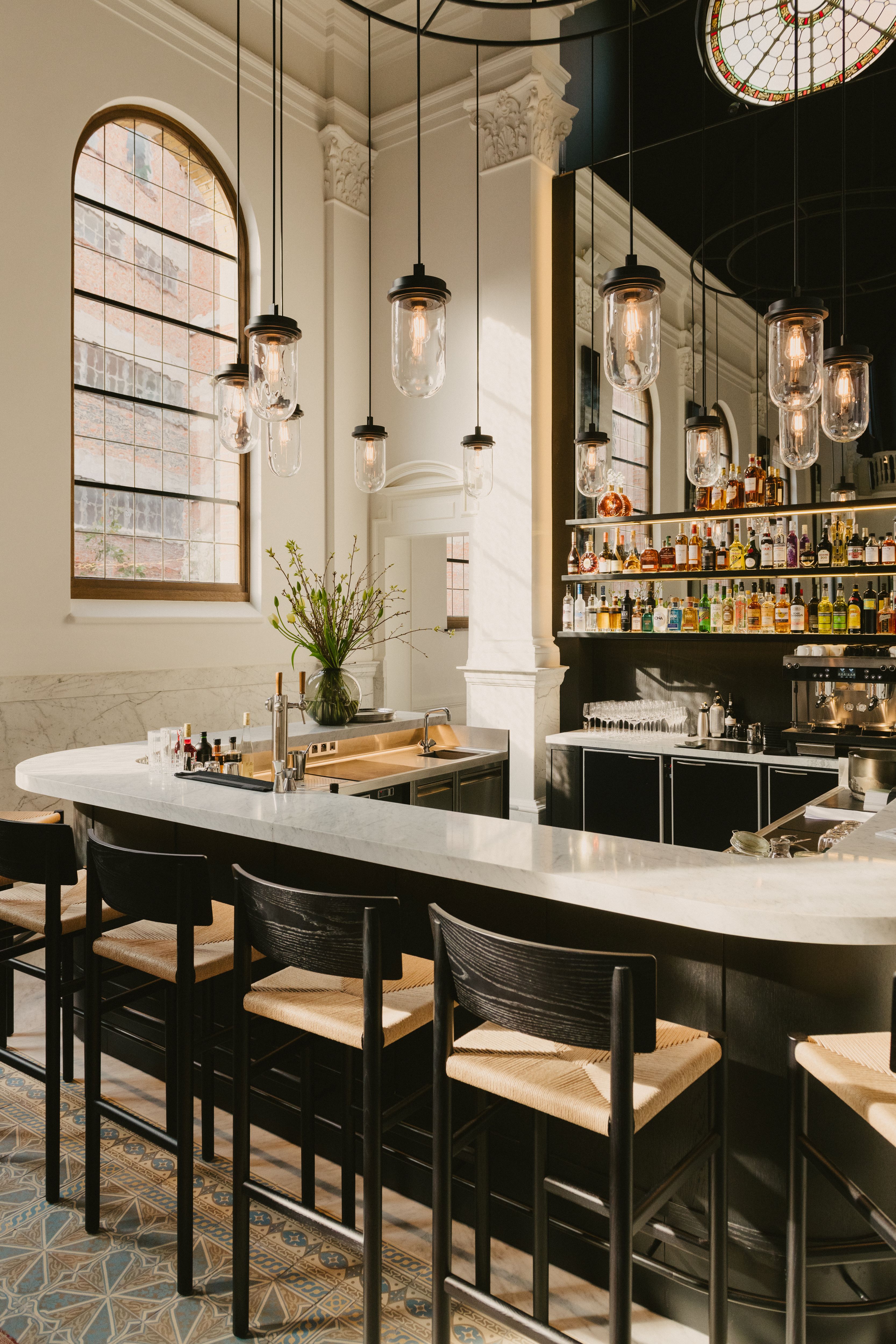
Upon passing through the iconic matt-black steel canopy, guests are enveloped in the tranquillity envisioned by Van Duysen. The desaturated colour palette, a signature touch, sets the stage for the coexistence of restored heritage and contemporary design - ‘an urban bolthole of subtle monochromatic style edged in functional luxury,’ as described by the creative duo.
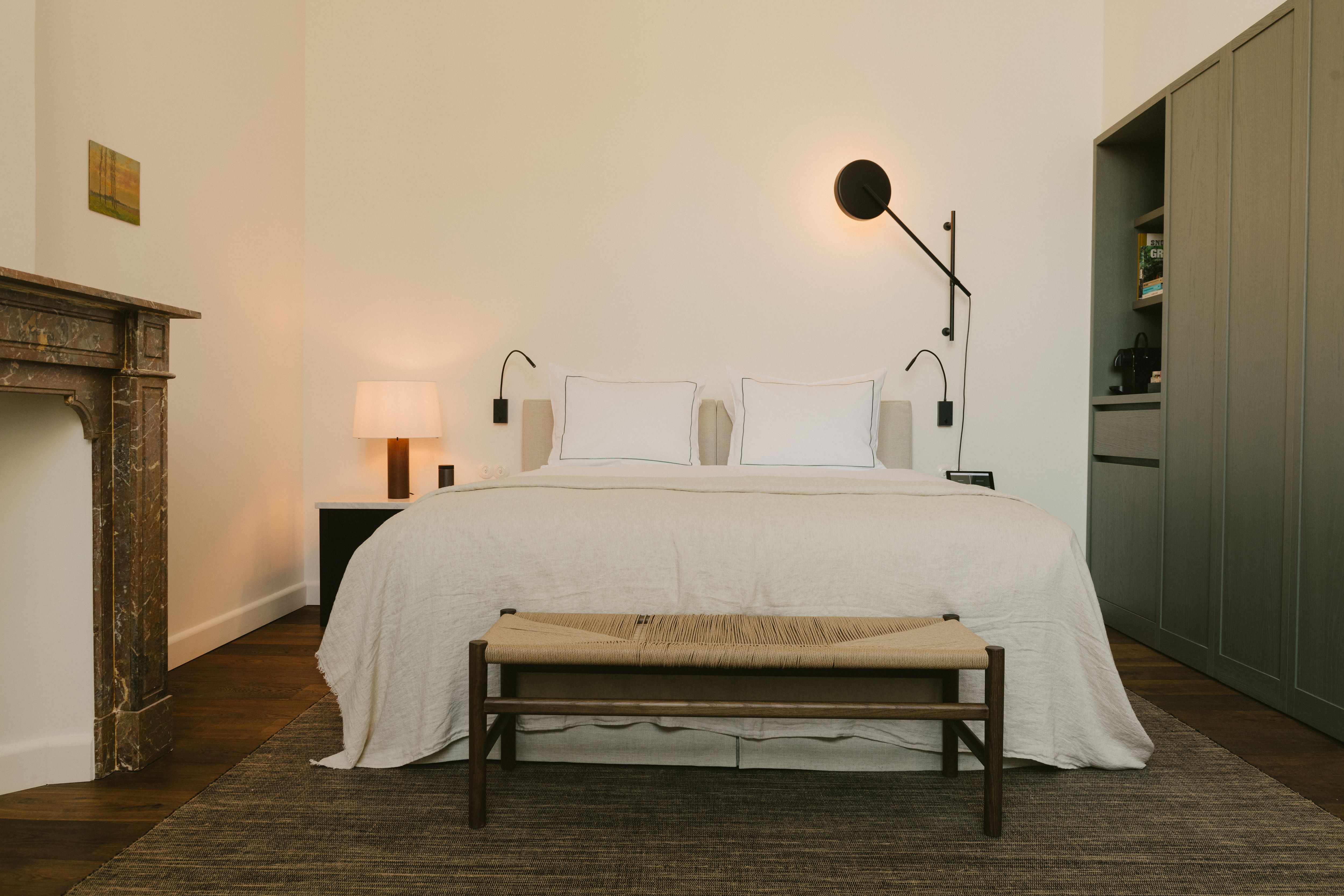
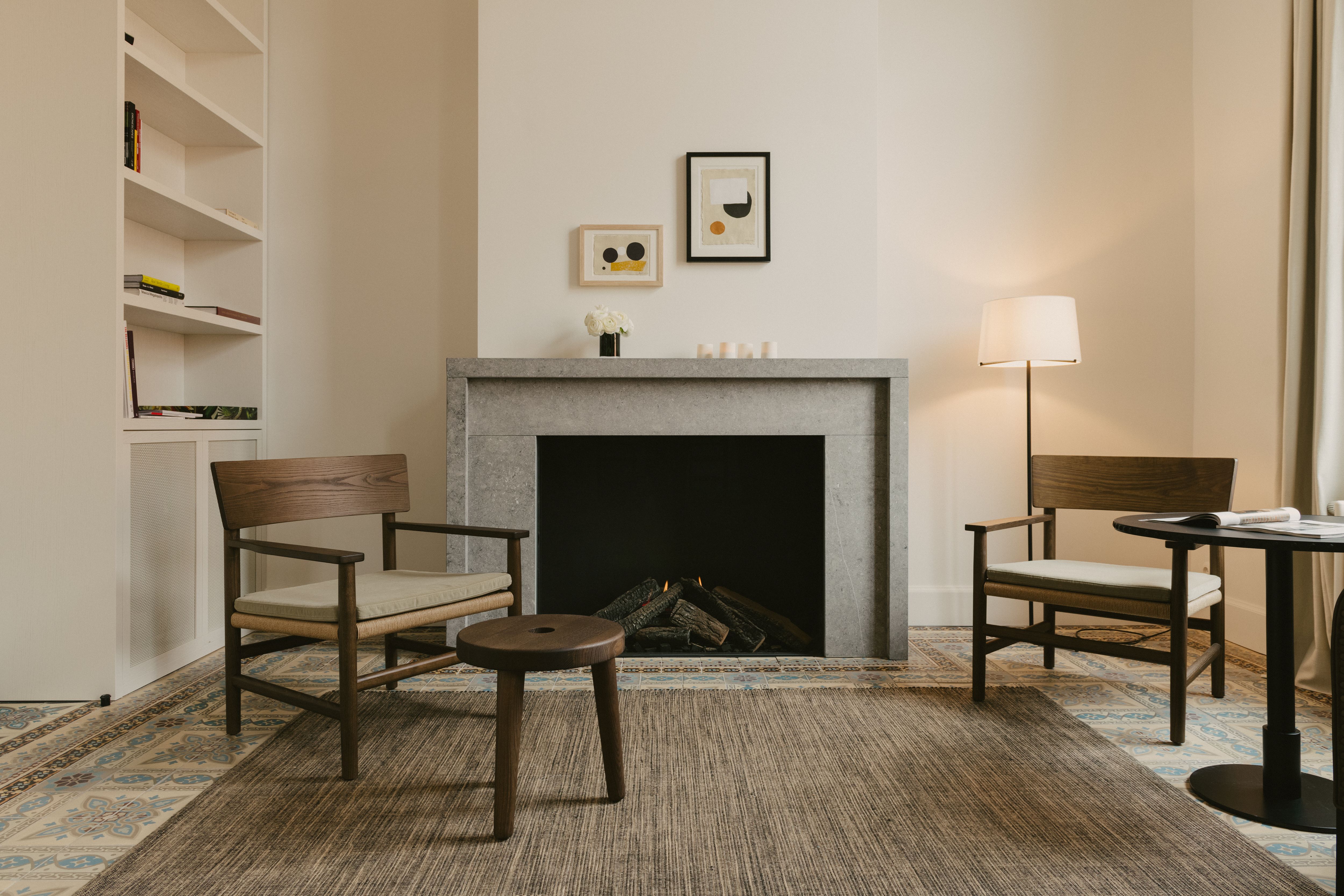
The hotel’s essence pays homage to its past through details like the revived chapel floor tiles, while statement centrepiece lighting from Flos and custom-designed Molteni&C furniture in moody blues and charcoal noir define its modern character. Original grey-green timber and white mouldings coalesce with modern black elements, creating a contemporary haven within historical walls. In the bedrooms, once nuns’ quarters, a palette of sage-green, creamy whites, marble, wood, and tawny tones offers a serene retreat.
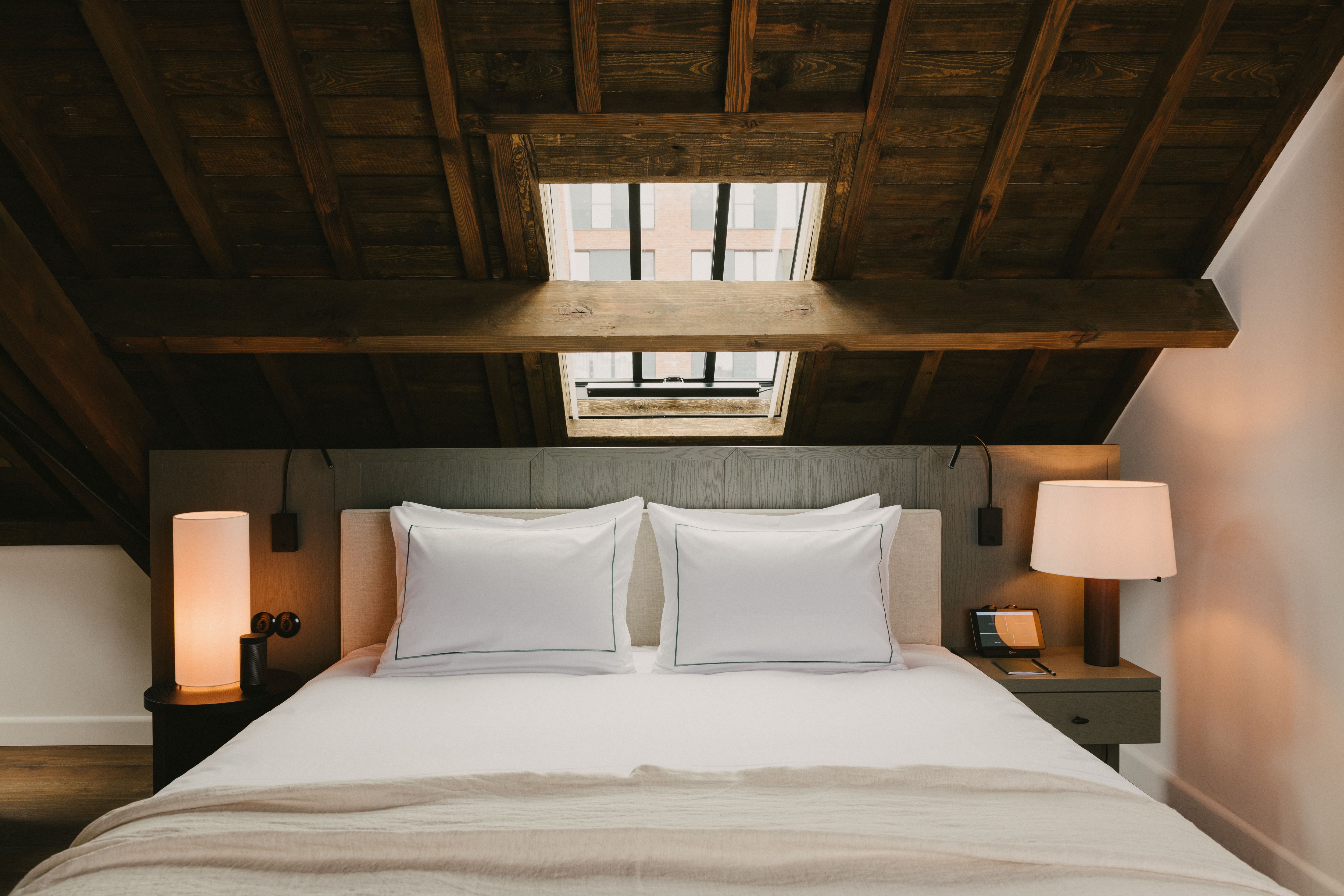
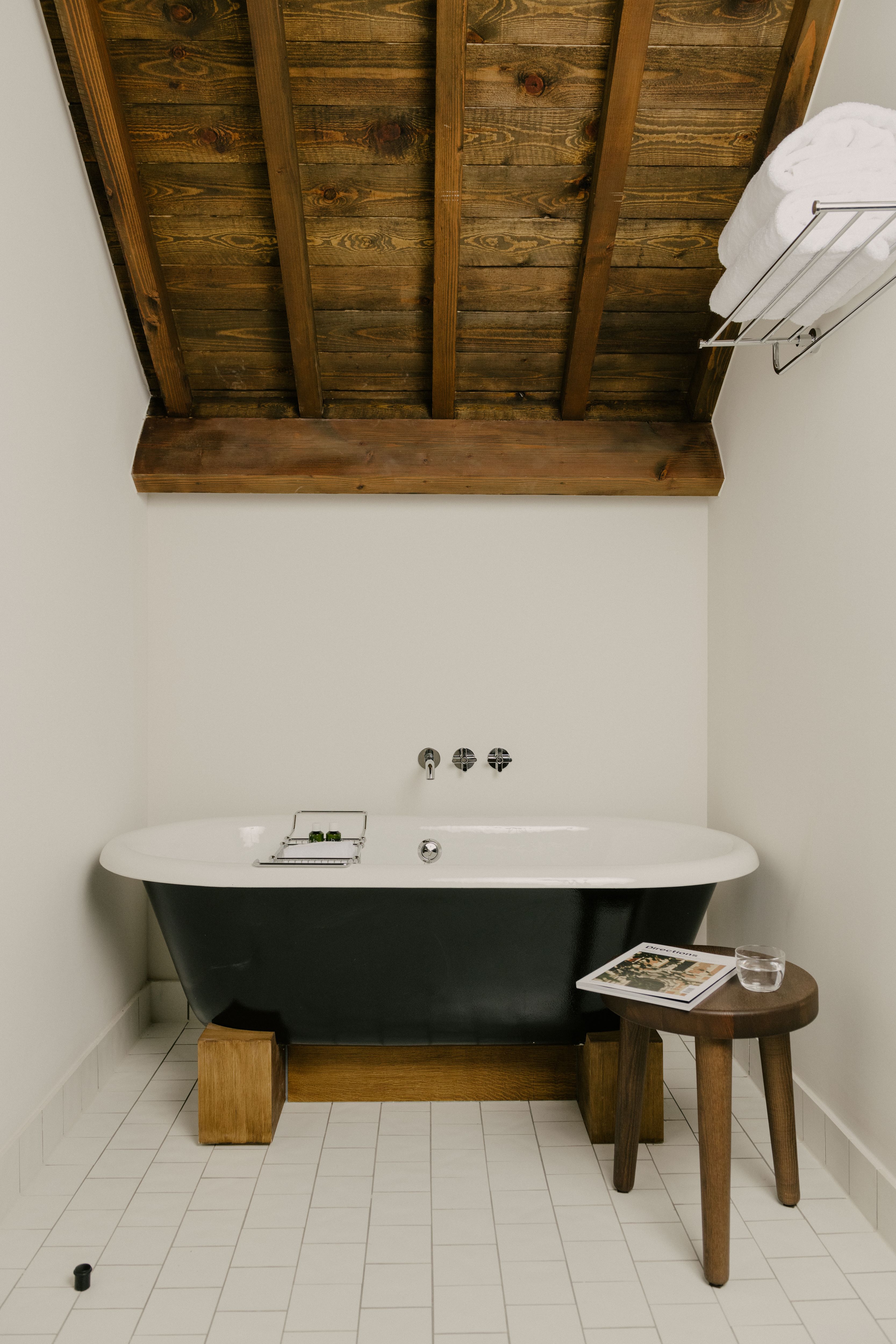
Van Duysen, reflecting on the project, shares: ‘My overall strategy in turning the hidden gem and its gardens into a hotel was first and foremost to respect the historical DNA of the site and its surroundings, achieved through the careful restoration of its neoclassical splendour, through the addition of contemporary architectural elements, suitably upgrading the premises to its new function as a modern hotel.’
